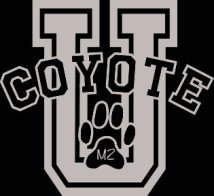










A Waterproof Set + Hurricane Sandy = Pipe Dream


The Pipe Dream Set for Canines by Mark Zagger



Copyright 2017 - Mark Zagger
All Rights Reserved
Website by Hawk Mountain
All Rights Reserved
Website by Hawk Mountain


Forming an Idea
I had already been blending some of my sets with a top layer of grass clippings or haylage; then one day I had another epiphany. Why cover the trap with dirt at all?



Trap Covering
I prefer cut haylage because it is light, and the pieces of grass are short, only 2-4 inches long, and don’t get caught up in or impede the trap jaws. Since mowed hayfields are green I do like a greener color, but I believe canines are color blind, so it’s more for blending, to make the set not stand out too much. I do dry the haylage. I spread it out in the yard and spread it around on a sunny day with my riding lawnmower. It dries faster that way. Then I use the mower again to blow it all together in big piles, then bag it up in large onion bags or old duck decoy mesh bags, and hang from the rafters in my barn until I need it.
Other material, like lawn grass clippings, will work. I have also run new hay bales through feed grinders at dairy farms. Broken up dried hay can be found under the hay in haylofts or under bales in fields. The important factor is that it be no more than 4 inches or so in length. In bean fields I’ve used bean chaff, and in the woods I’ve used broken up leaves and ground litter.
Corn silage does not work. It absorbs a lot of moisture and does not blend as well as hay/grass.
Other material, like lawn grass clippings, will work. I have also run new hay bales through feed grinders at dairy farms. Broken up dried hay can be found under the hay in haylofts or under bales in fields. The important factor is that it be no more than 4 inches or so in length. In bean fields I’ve used bean chaff, and in the woods I’ve used broken up leaves and ground litter.
Corn silage does not work. It absorbs a lot of moisture and does not blend as well as hay/grass.



Pipe Dream Set Basics
• The bedding method has the trap countersunk in sod ground but not resting in the bed, where dirt turns to mud and impedes the action of the trap.
• The hammer-bedding method pinches the sides of the hole against the trap, holding it above the bottom of the bed.
• Steel screen pan covers support the covering material, but just as importantly, allow moisture to pass through the covering, screen, and trap bed.
• The covering is dried grass or other vegetation only, vs. any type of dirt.
• Durable Schedule 40 conduit acts as a lure and bait holder, keeping odor contained within its interior and also providing a novel object for canines to lick, bite, or pull, encouraging foot movement and lengthening time at the set, thereby increasing odds of paws on pans.
• The hammer-bedding method pinches the sides of the hole against the trap, holding it above the bottom of the bed.
• Steel screen pan covers support the covering material, but just as importantly, allow moisture to pass through the covering, screen, and trap bed.
• The covering is dried grass or other vegetation only, vs. any type of dirt.
• Durable Schedule 40 conduit acts as a lure and bait holder, keeping odor contained within its interior and also providing a novel object for canines to lick, bite, or pull, encouraging foot movement and lengthening time at the set, thereby increasing odds of paws on pans.

Hurricane Sandy was the deadliest storm of the 2012 hurricane season, as well as the second-costliest hurricane in United States history, due not only to the wind but the massive amount of rain it dumped. The Internet was abuzz with talk on how whole traplines in the Southeast and Northeast were wiped out, and some trappers gave up for the season, or delayed their start until the storm passed.
I had little choice but to start right out of the gate. New York’s 5-week deer gun season makes most of our fall unproductive for long-line land trapping. Deer season runs until Christmas, and annual snowfalls of 150-300 inches in my area make effective land trapping nearly impossible. Frankly, if I don’t get my coyotes in the early fall on my 3-week line before deer season, I don’t get them.
Sandy hit my area in Central New York State on the night of October 29, the fourth check day of the land trapping season, and dumped 3-4 inches of rain, driven by 50-60 mph winds, on my coyote line overnight. I had over 100 traps out, but they were largely unaffected because of the type of set I was using. Knowing that the storm was imminent, on opening day I had made a higher percentage of those sets than normal. My first four check days yielded 54 coyotes, including three actually caught during the height of the storm. But that day it only took minimal maintenance to make the line fully functional again, and the following day I caught 10 coyotes. In fact, last year was my best catch to date for a 2-week period; 116 coyotes. (My vacation was cut one week short by a mechanical truck failure.)
I was able to accomplish this because I was predominantly using a unique waterproof/freeze-resistant set that I evolved. I call it the Pipe Dream Set. It involves a trap with a steel screen pan cover, covered with haylage, not dirt, in front of a 1-inch diameter piece of Schedule 40 gray wiring conduit driven in the ground firmly enough so it can’t be moved, with lure or bait in the top. I’ve been developing this set for about 20 years, borrowing and adapting a variety of techniques already being used, but pulling them together into one neat package. The 2012 season was the fourth that I’ve used this set in its present form, and it’s been so effective and maintenance free that it has become one of my primary sets.
I had little choice but to start right out of the gate. New York’s 5-week deer gun season makes most of our fall unproductive for long-line land trapping. Deer season runs until Christmas, and annual snowfalls of 150-300 inches in my area make effective land trapping nearly impossible. Frankly, if I don’t get my coyotes in the early fall on my 3-week line before deer season, I don’t get them.
Sandy hit my area in Central New York State on the night of October 29, the fourth check day of the land trapping season, and dumped 3-4 inches of rain, driven by 50-60 mph winds, on my coyote line overnight. I had over 100 traps out, but they were largely unaffected because of the type of set I was using. Knowing that the storm was imminent, on opening day I had made a higher percentage of those sets than normal. My first four check days yielded 54 coyotes, including three actually caught during the height of the storm. But that day it only took minimal maintenance to make the line fully functional again, and the following day I caught 10 coyotes. In fact, last year was my best catch to date for a 2-week period; 116 coyotes. (My vacation was cut one week short by a mechanical truck failure.)
I was able to accomplish this because I was predominantly using a unique waterproof/freeze-resistant set that I evolved. I call it the Pipe Dream Set. It involves a trap with a steel screen pan cover, covered with haylage, not dirt, in front of a 1-inch diameter piece of Schedule 40 gray wiring conduit driven in the ground firmly enough so it can’t be moved, with lure or bait in the top. I’ve been developing this set for about 20 years, borrowing and adapting a variety of techniques already being used, but pulling them together into one neat package. The 2012 season was the fourth that I’ve used this set in its present form, and it’s been so effective and maintenance free that it has become one of my primary sets.
First I’ll describe how the set evolved, then give step-by-step instructions on how to make it.
I’ll be the first to admit that the success of a dirthole set is undisputed, and the flat set is quite effective in the right circumstances. But the fact that the trap must be bedded in and covered with dirt creates complications when the weather deteriorates. The rain and freezing temps common on fall canine lines can dramatically increase time spent on maintenance, and limit the amount of traps you can keep functioning. Keeping a canine line operating in these conditions can be hard work indeed.
I started taking a hard look at conventional setting methods, with several basic goals: simplifying sets and materials, increasing set making speed, keeping sets functional despite weather, and reducing set maintenance.
One obvious weak point was the dirthole itself. It took time to dig even in good soil (rocky and frozen ground makes effective dirthole building all but impossible), and the hole often filled with water during rain or snow events.
The company I work for builds and maintains cell phone towers and public safety towers, and we use a lot of electrical conduit. One day one of our sub-contractors commented that the Schedule 40 conduit we use is far more durable than Schedule 40 PVC drainage pipe, since it’s designed to literally have trucks drive over it. Then I had an epiphany: Why not drive a piece of conduit in the ground, as a lure/bait holder? Hopefully the gray color would blend into the background and not alarm coyotes. I’d used T-bones, Grab ‘n Die stakes, Grubstakes, etc., for years, and I’m familiar with the uses of M-44s, Black Blocks, Lenon’s lure bottle in blackened wooden stakes, etc., so the idea of driving an attractor/lure/bait holder in the ground, with the odor above ground, was not new to me.
I cut 1-inch diameter conduit into 9-10 inch pieces, and where I would have dug a dirthole, with my hammer digging tool I pounded them into the ground almost vertically but tilted at a slight angle towards the trap, with about 3-4 inches sticking out. They went in much faster than digging a dirthole, and they were tough enough to drive even into hard or frozen ground. Then I put lure or bait into the top of the pipe.
The coyotes responded with enthusiasm. I had my dirthole replacement!
Any hardware store worth its salt will have several 10-foot lengths of this conduit stacked in the corner, and the big retailers like Home Depot and Lowes have aisles of it. At $1.88 per length, it’s well within the budget of any trapper anywhere.
I also experimented with trap bedding, with the intention of using less dirt, and gradually evolved a method of cutting the bed the exact size of the trap, and pounding the dirt edges of the bed in against the trap. Hammer bedding “pinches” the trap in place, requiring no dry dirt in the bottom of the bed, as in conventional bedding methods. I quickly discovered it worked exceptionally well in sod ground.
I was already using screen pan covers because they didn’t cave in when wet like other pan covers, and allowed water to pass through. I had already been blending some of my sets with a top layer of grass clippings or haylage; then one day I had another epiphany. Why cover the trap with dirt at all?
After trying different materials I eventually settled on haylage, a grass crop that is cut, harvested, and stored for feeding farm animals. It’s much easier to handle and gather than dirt, and it’s much less work to acquire a season’s worth. It’s also light and easy to store. Haylage really blends well into sod and hayfields; in fact it’s so natural there it actually shines. Many trappers have difficulty blending or utilizing sets in sod and hayfields, but this set exploits the strengths of setting there.
I settled on steel screen because, being stiffer, it gives the haylage covering the best “structure” and doesn’t allow it to cave in after even a heavy rain. The water passes through the covering and screen into the trap bed, without washing away or disturbing the appearance of the covering, and the trap remains both camouflaged and fully functional. Steel screen holds its shape much longer, and I don’t have to go near the set again until a catch is made. But I wouldn’t hesitate to use other types of screen covers if you don’t have access to steel screen.
Another big plus is that when temps drop below freezing, due to the thin layer of haylage I use, and the fact that there isn’t much moisture left in it because of the screen under it, it doesn’t freeze solid enough to affect the trap closing. When the trap fires the haylage breaks up and the jaws come up easily through it. And because the trap isn’t packed into dirt to bed it, it also easily breaks free of the surrounding dirt. The set is basically freeze proof. (However, as a precaution, I don’t hesitate to spray a light mist of glycol on the set if a freeze is coming after heavy rains.)
I use primarily the Jake Trap, and some Sterling 500s and KB Compounds. The 4-coiled traps are not necessary to hold the coyote, but they cut through thick or frozen cover better. However, I’m sure this system will work with any good coyote trap. I feel bigger is better, and would lean towards 6-inch jawspread traps like the Montana #3 dogless or the Bridger #3 coil. But I’ve caught hundreds of coyotes in the smaller Bridger #2 coil, and I wouldn’t hesitate to try this system with the #1.75 size traps, if that’s what I had. I don’t feel there’s any need to retool to get the benefit from it. The only crucial factor is that you be able to use a screen pan cover.
To make the set I select a backing, like a tuft of grass 4-6 inches high and 5-6 inches or more in diameter. It should stick up above the surrounding mowed field enough, and be wide enough, to attract a coyote’s attention. I drive the conduit in at the base of the tuft, or even back in the grass a bit if I want it less visible. I think putting it at the base of a grass tuft, along with the slight angle, brings them around to the trap side regardless of wind. Like T-bones and M-44s, I think coyotes want to bite the conduit, and their inability to pull it out makes them shuffle their feet around and increases the odds they’ll step on the trap. Grass tufts are pretty much all I use, but if you don’t have any, use whatever backing you normally would for your conventional sets.
Next I cut out a trap bed, the exact shape of the trap, not including the spring levers. I prefer the center of the pan to be 8-10 inches back from the conduit, and I don’t bother to offset it right or left. The bed can be dug with a trowel or the combination hammer/digging tool, but I use a fireman’s Pulaski axe, which has a 3.75 lb. traditional bit axe blade on one end of the head, a mattock blade for digging or grubbing on the other end, and a 36-inch fiberglass handle. I dig a deep bed, at least 3-4 inches.
I set the trap and insert the screen pan cover. With the combination hammer/digging tool, I pound in a groove for each spring lever, at 9 and 3 o’clock. Next I stake the trap in the bottom of the bed, using an earth anchor cable stake. (I use 18-24 inches of chain on the trap, with a heavy duty in-line shock spring.)
I push and snug the trap down into the bed. It should be almost flush with the ground level, at the most ½ to ¾ inch below it. With the hammer I tap the ground firmly all around the outside edge of the trap, pounding at an angle towards it, forcing the dirt tight against the jaws. I also pound dirt under the spring levers. Another advantage of sod ground is that the roots hold the dirt together and help keep its shape and consistency when you force it against the sides of the trap. Don’t worry about the indentations you make in the ground beside the trap; coyotes won’t notice them.
I keep tapping around the trap until it’s firmly bedded. This only takes a few seconds once you get the knack of it. The trap bed has now “locked” the trap into place, and there will be a void of air under it. Since the trap is largely not touching any dirt in the bottom of the bed, and there is no dirt on the coils, spring levers, etc., the trap remains functional during inclement weather.
Now I grab a softball-size handful of haylage and sprinkle it over the set. I use only enough to cover the outline of the trap; often I can see a bit of screen showing through it. I feather it out 8-10 inches on each side of the trap, to blend it in. I don’t want any hard edges/lines at the edges of the pattern. The result is an absolutely natural looking flat patch of cut grass that looks like it was dropped there by a mowing machine. Mowed hayfields are full of these, coyotes see them every day, and the bristly erect cut grass around the set makes the level spot of haylage an inviting flat place for them to step.
The conduit can accept lure, solid or liquid bait, urine, etc., individually or combined. I have used all types of attractants, even straight urine. Any bait or lure will work. The thing to understand is that the pipe is a visual attractor and a lure metering device, meant to protect the odor from the weather and preclude one from having to re-lure. I now drill a 1/16-inch hole in the side of the pipe, about halfway along the length, to let out any rain that gets in the open end of the pipe.
Even if a liquid attractant soaks into the ground in the pipe, I feel it is still somewhat confined in that space and continues to emit enough odor to eliminate re-luring. Last year I ran one location for two weeks straight. I’d caught six coyotes there, and never put in another clean set because I had one Pipe Dream Set that had been untouched. On day 14 I took a big, old female coyote in that set. I looked at my notes and saw I’d put it in on opening day -- before Sandy -- and lured it with red fox gland lure only.
Using a flat-bladed butter knife or similar tool, I scoop out my attractant and push it into the end of the pipe. If I use urine I usually squirt it on the ground at the base of the pipe, although sometimes I squirt it into the pipe.
The set is now complete.
The Pipe Dream Set is simple and fast to make, and no dirt is needed. I don’t approach it again unless I have a catch; it will function for many weeks regardless of weather. There is no need to re-bed or re-cover the trap, or re-lure the pipe. It is essentially maintenance-free: Set it and forget it.
There are other advantages to using the conduit. To date I have had no rollers due to the conduit and attractors being above ground. The conduit is also more durable than other items one can pound in, so it can be used over and over. I pull it and use it at a new set in another location. If it’s difficult to pull, I twist it free with a pair of channel lock pliers. When I use it at another location I don’t bother to clean out the previous lure, or try to use the same lure in the pipe again; I simply add whatever I want to use at the next location. I don’t care if there’s a different lure in the conduit, and the coyotes don’t care, either. I don’t obsess about lure odor mixes; it’s not even on my radar.
This set can also be made with a T-bone, wool-wrapped dowel, etc. instead of the conduit. But for you guys who trap in states with regulations limiting the use of bones, feathers, animal parts, etc. at a set, the Pipe Dream will provide a legal means to deploy a set of this manner.
This bedding and covering method will also let you use a dirthole in sod or a hayfield, in place of the conduit.
In un-mowed fields with tall grass I’m almost always able to find patches of shorter grass to make this set in.
My normal setup at each location is three sets: a big loud dirthole, a Pipe Dream, and a grass tuft flat set where my dogs have sniffed out where coyotes have marked. Last year I ran 50% T-bones or Pipe Dreams, with the T-bones set the same exact way except for bone vs. pipe. Those sets produced 70% of my coyotes. Every year I use more of them.
Having to trap coyotes in rain, snow, and hay/sod fields is as sure as death and taxes. I have had to adapt for my area and conditions because I know the question is not, ”Will it rain?” but rather, “How much rain will we get?” I used to avoid hayfields due to difficulty in blending sets, yet now I seek them out. A final plus to setting hayfields is less muddy coyotes than when setting in cornfields. And that, my friends, is the icing on the cake for my Pipe Dream Set!
Read more about this weatherproof set in The Pipe Dream Set Revisited - available now on our website!
I’ll be the first to admit that the success of a dirthole set is undisputed, and the flat set is quite effective in the right circumstances. But the fact that the trap must be bedded in and covered with dirt creates complications when the weather deteriorates. The rain and freezing temps common on fall canine lines can dramatically increase time spent on maintenance, and limit the amount of traps you can keep functioning. Keeping a canine line operating in these conditions can be hard work indeed.
I started taking a hard look at conventional setting methods, with several basic goals: simplifying sets and materials, increasing set making speed, keeping sets functional despite weather, and reducing set maintenance.
One obvious weak point was the dirthole itself. It took time to dig even in good soil (rocky and frozen ground makes effective dirthole building all but impossible), and the hole often filled with water during rain or snow events.
The company I work for builds and maintains cell phone towers and public safety towers, and we use a lot of electrical conduit. One day one of our sub-contractors commented that the Schedule 40 conduit we use is far more durable than Schedule 40 PVC drainage pipe, since it’s designed to literally have trucks drive over it. Then I had an epiphany: Why not drive a piece of conduit in the ground, as a lure/bait holder? Hopefully the gray color would blend into the background and not alarm coyotes. I’d used T-bones, Grab ‘n Die stakes, Grubstakes, etc., for years, and I’m familiar with the uses of M-44s, Black Blocks, Lenon’s lure bottle in blackened wooden stakes, etc., so the idea of driving an attractor/lure/bait holder in the ground, with the odor above ground, was not new to me.
I cut 1-inch diameter conduit into 9-10 inch pieces, and where I would have dug a dirthole, with my hammer digging tool I pounded them into the ground almost vertically but tilted at a slight angle towards the trap, with about 3-4 inches sticking out. They went in much faster than digging a dirthole, and they were tough enough to drive even into hard or frozen ground. Then I put lure or bait into the top of the pipe.
The coyotes responded with enthusiasm. I had my dirthole replacement!
Any hardware store worth its salt will have several 10-foot lengths of this conduit stacked in the corner, and the big retailers like Home Depot and Lowes have aisles of it. At $1.88 per length, it’s well within the budget of any trapper anywhere.
I also experimented with trap bedding, with the intention of using less dirt, and gradually evolved a method of cutting the bed the exact size of the trap, and pounding the dirt edges of the bed in against the trap. Hammer bedding “pinches” the trap in place, requiring no dry dirt in the bottom of the bed, as in conventional bedding methods. I quickly discovered it worked exceptionally well in sod ground.
I was already using screen pan covers because they didn’t cave in when wet like other pan covers, and allowed water to pass through. I had already been blending some of my sets with a top layer of grass clippings or haylage; then one day I had another epiphany. Why cover the trap with dirt at all?
After trying different materials I eventually settled on haylage, a grass crop that is cut, harvested, and stored for feeding farm animals. It’s much easier to handle and gather than dirt, and it’s much less work to acquire a season’s worth. It’s also light and easy to store. Haylage really blends well into sod and hayfields; in fact it’s so natural there it actually shines. Many trappers have difficulty blending or utilizing sets in sod and hayfields, but this set exploits the strengths of setting there.
I settled on steel screen because, being stiffer, it gives the haylage covering the best “structure” and doesn’t allow it to cave in after even a heavy rain. The water passes through the covering and screen into the trap bed, without washing away or disturbing the appearance of the covering, and the trap remains both camouflaged and fully functional. Steel screen holds its shape much longer, and I don’t have to go near the set again until a catch is made. But I wouldn’t hesitate to use other types of screen covers if you don’t have access to steel screen.
Another big plus is that when temps drop below freezing, due to the thin layer of haylage I use, and the fact that there isn’t much moisture left in it because of the screen under it, it doesn’t freeze solid enough to affect the trap closing. When the trap fires the haylage breaks up and the jaws come up easily through it. And because the trap isn’t packed into dirt to bed it, it also easily breaks free of the surrounding dirt. The set is basically freeze proof. (However, as a precaution, I don’t hesitate to spray a light mist of glycol on the set if a freeze is coming after heavy rains.)
I use primarily the Jake Trap, and some Sterling 500s and KB Compounds. The 4-coiled traps are not necessary to hold the coyote, but they cut through thick or frozen cover better. However, I’m sure this system will work with any good coyote trap. I feel bigger is better, and would lean towards 6-inch jawspread traps like the Montana #3 dogless or the Bridger #3 coil. But I’ve caught hundreds of coyotes in the smaller Bridger #2 coil, and I wouldn’t hesitate to try this system with the #1.75 size traps, if that’s what I had. I don’t feel there’s any need to retool to get the benefit from it. The only crucial factor is that you be able to use a screen pan cover.
To make the set I select a backing, like a tuft of grass 4-6 inches high and 5-6 inches or more in diameter. It should stick up above the surrounding mowed field enough, and be wide enough, to attract a coyote’s attention. I drive the conduit in at the base of the tuft, or even back in the grass a bit if I want it less visible. I think putting it at the base of a grass tuft, along with the slight angle, brings them around to the trap side regardless of wind. Like T-bones and M-44s, I think coyotes want to bite the conduit, and their inability to pull it out makes them shuffle their feet around and increases the odds they’ll step on the trap. Grass tufts are pretty much all I use, but if you don’t have any, use whatever backing you normally would for your conventional sets.
Next I cut out a trap bed, the exact shape of the trap, not including the spring levers. I prefer the center of the pan to be 8-10 inches back from the conduit, and I don’t bother to offset it right or left. The bed can be dug with a trowel or the combination hammer/digging tool, but I use a fireman’s Pulaski axe, which has a 3.75 lb. traditional bit axe blade on one end of the head, a mattock blade for digging or grubbing on the other end, and a 36-inch fiberglass handle. I dig a deep bed, at least 3-4 inches.
I set the trap and insert the screen pan cover. With the combination hammer/digging tool, I pound in a groove for each spring lever, at 9 and 3 o’clock. Next I stake the trap in the bottom of the bed, using an earth anchor cable stake. (I use 18-24 inches of chain on the trap, with a heavy duty in-line shock spring.)
I push and snug the trap down into the bed. It should be almost flush with the ground level, at the most ½ to ¾ inch below it. With the hammer I tap the ground firmly all around the outside edge of the trap, pounding at an angle towards it, forcing the dirt tight against the jaws. I also pound dirt under the spring levers. Another advantage of sod ground is that the roots hold the dirt together and help keep its shape and consistency when you force it against the sides of the trap. Don’t worry about the indentations you make in the ground beside the trap; coyotes won’t notice them.
I keep tapping around the trap until it’s firmly bedded. This only takes a few seconds once you get the knack of it. The trap bed has now “locked” the trap into place, and there will be a void of air under it. Since the trap is largely not touching any dirt in the bottom of the bed, and there is no dirt on the coils, spring levers, etc., the trap remains functional during inclement weather.
Now I grab a softball-size handful of haylage and sprinkle it over the set. I use only enough to cover the outline of the trap; often I can see a bit of screen showing through it. I feather it out 8-10 inches on each side of the trap, to blend it in. I don’t want any hard edges/lines at the edges of the pattern. The result is an absolutely natural looking flat patch of cut grass that looks like it was dropped there by a mowing machine. Mowed hayfields are full of these, coyotes see them every day, and the bristly erect cut grass around the set makes the level spot of haylage an inviting flat place for them to step.
The conduit can accept lure, solid or liquid bait, urine, etc., individually or combined. I have used all types of attractants, even straight urine. Any bait or lure will work. The thing to understand is that the pipe is a visual attractor and a lure metering device, meant to protect the odor from the weather and preclude one from having to re-lure. I now drill a 1/16-inch hole in the side of the pipe, about halfway along the length, to let out any rain that gets in the open end of the pipe.
Even if a liquid attractant soaks into the ground in the pipe, I feel it is still somewhat confined in that space and continues to emit enough odor to eliminate re-luring. Last year I ran one location for two weeks straight. I’d caught six coyotes there, and never put in another clean set because I had one Pipe Dream Set that had been untouched. On day 14 I took a big, old female coyote in that set. I looked at my notes and saw I’d put it in on opening day -- before Sandy -- and lured it with red fox gland lure only.
Using a flat-bladed butter knife or similar tool, I scoop out my attractant and push it into the end of the pipe. If I use urine I usually squirt it on the ground at the base of the pipe, although sometimes I squirt it into the pipe.
The set is now complete.
The Pipe Dream Set is simple and fast to make, and no dirt is needed. I don’t approach it again unless I have a catch; it will function for many weeks regardless of weather. There is no need to re-bed or re-cover the trap, or re-lure the pipe. It is essentially maintenance-free: Set it and forget it.
There are other advantages to using the conduit. To date I have had no rollers due to the conduit and attractors being above ground. The conduit is also more durable than other items one can pound in, so it can be used over and over. I pull it and use it at a new set in another location. If it’s difficult to pull, I twist it free with a pair of channel lock pliers. When I use it at another location I don’t bother to clean out the previous lure, or try to use the same lure in the pipe again; I simply add whatever I want to use at the next location. I don’t care if there’s a different lure in the conduit, and the coyotes don’t care, either. I don’t obsess about lure odor mixes; it’s not even on my radar.
This set can also be made with a T-bone, wool-wrapped dowel, etc. instead of the conduit. But for you guys who trap in states with regulations limiting the use of bones, feathers, animal parts, etc. at a set, the Pipe Dream will provide a legal means to deploy a set of this manner.
This bedding and covering method will also let you use a dirthole in sod or a hayfield, in place of the conduit.
In un-mowed fields with tall grass I’m almost always able to find patches of shorter grass to make this set in.
My normal setup at each location is three sets: a big loud dirthole, a Pipe Dream, and a grass tuft flat set where my dogs have sniffed out where coyotes have marked. Last year I ran 50% T-bones or Pipe Dreams, with the T-bones set the same exact way except for bone vs. pipe. Those sets produced 70% of my coyotes. Every year I use more of them.
Having to trap coyotes in rain, snow, and hay/sod fields is as sure as death and taxes. I have had to adapt for my area and conditions because I know the question is not, ”Will it rain?” but rather, “How much rain will we get?” I used to avoid hayfields due to difficulty in blending sets, yet now I seek them out. A final plus to setting hayfields is less muddy coyotes than when setting in cornfields. And that, my friends, is the icing on the cake for my Pipe Dream Set!
Read more about this weatherproof set in The Pipe Dream Set Revisited - available now on our website!



According to Zagger


According to Zagger

The Pipe Dream Set for Canines by Mark Zagger


A Waterproof Set + Hurricane Sandy = Pipe Dream

Hurricane Sandy was the deadliest storm of the 2012 hurricane season, as well as the second-costliest hurricane in United States history, due not only to the wind but the massive amount of rain it dumped. The Internet was abuzz with talk on how whole traplines in the Southeast and Northeast were wiped out, and some trappers gave up for the season, or delayed their start until the storm passed.
I had little choice but to start right out of the gate. New York’s 5-week deer gun season makes most of our fall unproductive for long-line land trapping. Deer season runs until Christmas, and annual snowfalls of 150-300 inches in my area make effective land trapping nearly impossible. Frankly, if I don’t get my coyotes in the early fall on my 3-week line before deer season, I don’t get them.
Sandy hit my area in Central New York State on the night of October 29, the fourth check day of the land trapping season, and dumped 3-4 inches of rain, driven by 50-60 mph winds, on my coyote line overnight. I had over 100 traps out, but they were largely unaffected because of the type of set I was using. Knowing that the storm was imminent, on opening day I had made a higher percentage of those sets than normal. My first four check days yielded 54 coyotes, including three actually caught during the height of the storm. But that day it only took minimal maintenance to make the line fully functional again, and the following day I caught 10 coyotes. In fact, last year was my best catch to date for a 2-week period; 116 coyotes. (My vacation was cut one week short by a mechanical truck failure.)
I was able to accomplish this because I was predominantly using a unique waterproof/freeze-resistant set that I evolved. I call it the Pipe Dream Set. It involves a trap with a steel screen pan cover, covered with haylage, not dirt, in front of a 1-inch diameter piece of Schedule 40 gray wiring conduit driven in the ground firmly enough so it can’t be moved, with lure or bait in the top. I’ve been developing this set for about 20 years, borrowing and adapting a variety of techniques already being used, but pulling them together into one neat package. The 2012 season was the fourth that I’ve used this set in its present form, and it’s been so effective and maintenance free that it has become one of my primary sets.
I had little choice but to start right out of the gate. New York’s 5-week deer gun season makes most of our fall unproductive for long-line land trapping. Deer season runs until Christmas, and annual snowfalls of 150-300 inches in my area make effective land trapping nearly impossible. Frankly, if I don’t get my coyotes in the early fall on my 3-week line before deer season, I don’t get them.
Sandy hit my area in Central New York State on the night of October 29, the fourth check day of the land trapping season, and dumped 3-4 inches of rain, driven by 50-60 mph winds, on my coyote line overnight. I had over 100 traps out, but they were largely unaffected because of the type of set I was using. Knowing that the storm was imminent, on opening day I had made a higher percentage of those sets than normal. My first four check days yielded 54 coyotes, including three actually caught during the height of the storm. But that day it only took minimal maintenance to make the line fully functional again, and the following day I caught 10 coyotes. In fact, last year was my best catch to date for a 2-week period; 116 coyotes. (My vacation was cut one week short by a mechanical truck failure.)
I was able to accomplish this because I was predominantly using a unique waterproof/freeze-resistant set that I evolved. I call it the Pipe Dream Set. It involves a trap with a steel screen pan cover, covered with haylage, not dirt, in front of a 1-inch diameter piece of Schedule 40 gray wiring conduit driven in the ground firmly enough so it can’t be moved, with lure or bait in the top. I’ve been developing this set for about 20 years, borrowing and adapting a variety of techniques already being used, but pulling them together into one neat package. The 2012 season was the fourth that I’ve used this set in its present form, and it’s been so effective and maintenance free that it has become one of my primary sets.
First I’ll describe how the set evolved, then give step-by-step instructions on how to make it.
I’ll be the first to admit that the success of a dirthole set is undisputed, and the flat set is quite effective in the right circumstances. But the fact that the trap must be bedded in and covered with dirt creates complications when the weather deteriorates. The rain and freezing temps common on fall canine lines can dramatically increase time spent on maintenance, and limit the amount of traps you can keep functioning. Keeping a canine line operating in these conditions can be hard work indeed.
I started taking a hard look at conventional setting methods, with several basic goals: simplifying sets and materials, increasing set making speed, keeping sets functional despite weather, and reducing set maintenance.
One obvious weak point was the dirthole itself. It took time to dig even in good soil (rocky and frozen ground makes effective dirthole building all but impossible), and the hole often filled with water during rain or snow events.
The company I work for builds and maintains cell phone towers and public safety towers, and we use a lot of electrical conduit. One day one of our sub-contractors commented that the Schedule 40 conduit we use is far more durable than Schedule 40 PVC drainage pipe, since it’s designed to literally have trucks drive over it. Then I had an epiphany: Why not drive a piece of conduit in the ground, as a lure/bait holder? Hopefully the gray color would blend into the background and not alarm coyotes. I’d used T-bones, Grab ‘n Die stakes, Grubstakes, etc., for years, and I’m familiar with the uses of M-44s, Black Blocks, Lenon’s lure bottle in blackened wooden stakes, etc., so the idea of driving an attractor/lure/bait holder in the ground, with the odor above ground, was not new to me.
I cut 1-inch diameter conduit into 9-10 inch pieces, and where I would have dug a dirthole, with my hammer digging tool I pounded them into the ground almost vertically but tilted at a slight angle towards the trap, with about 3-4 inches sticking out. They went in much faster than digging a dirthole, and they were tough enough to drive even into hard or frozen ground. Then I put lure or bait into the top of the pipe.
The coyotes responded with enthusiasm. I had my dirthole replacement!
Any hardware store worth its salt will have several 10-foot lengths of this conduit stacked in the corner, and the big retailers like Home Depot and Lowes have aisles of it. At $1.88 per length, it’s well within the budget of any trapper anywhere.
I also experimented with trap bedding, with the intention of using less dirt, and gradually evolved a method of cutting the bed the exact size of the trap, and pounding the dirt edges of the bed in against the trap. Hammer bedding “pinches” the trap in place, requiring no dry dirt in the bottom of the bed, as in conventional bedding methods. I quickly discovered it worked exceptionally well in sod ground.
I was already using screen pan covers because they didn’t cave in when wet like other pan covers, and allowed water to pass through. I had already been blending some of my sets with a top layer of grass clippings or haylage; then one day I had another epiphany. Why cover the trap with dirt at all?
After trying different materials I eventually settled on haylage, a grass crop that is cut, harvested, and stored for feeding farm animals. It’s much easier to handle and gather than dirt, and it’s much less work to acquire a season’s worth. It’s also light and easy to store. Haylage really blends well into sod and hayfields; in fact it’s so natural there it actually shines. Many trappers have difficulty blending or utilizing sets in sod and hayfields, but this set exploits the strengths of setting there.
I settled on steel screen because, being stiffer, it gives the haylage covering the best “structure” and doesn’t allow it to cave in after even a heavy rain. The water passes through the covering and screen into the trap bed, without washing away or disturbing the appearance of the covering, and the trap remains both camouflaged and fully functional. Steel screen holds its shape much longer, and I don’t have to go near the set again until a catch is made. But I wouldn’t hesitate to use other types of screen covers if you don’t have access to steel screen.
Another big plus is that when temps drop below freezing, due to the thin layer of haylage I use, and the fact that there isn’t much moisture left in it because of the screen under it, it doesn’t freeze solid enough to affect the trap closing. When the trap fires the haylage breaks up and the jaws come up easily through it. And because the trap isn’t packed into dirt to bed it, it also easily breaks free of the surrounding dirt. The set is basically freeze proof. (However, as a precaution, I don’t hesitate to spray a light mist of glycol on the set if a freeze is coming after heavy rains.)
I use primarily the Jake Trap, and some Sterling 500s and KB Compounds. The 4-coiled traps are not necessary to hold the coyote, but they cut through thick or frozen cover better. However, I’m sure this system will work with any good coyote trap. I feel bigger is better, and would lean towards 6-inch jawspread traps like the Montana #3 dogless or the Bridger #3 coil. But I’ve caught hundreds of coyotes in the smaller Bridger #2 coil, and I wouldn’t hesitate to try this system with the #1.75 size traps, if that’s what I had. I don’t feel there’s any need to retool to get the benefit from it. The only crucial factor is that you be able to use a screen pan cover.
To make the set I select a backing, like a tuft of grass 4-6 inches high and 5-6 inches or more in diameter. It should stick up above the surrounding mowed field enough, and be wide enough, to attract a coyote’s attention. I drive the conduit in at the base of the tuft, or even back in the grass a bit if I want it less visible. I think putting it at the base of a grass tuft, along with the slight angle, brings them around to the trap side regardless of wind. Like T-bones and M-44s, I think coyotes want to bite the conduit, and their inability to pull it out makes them shuffle their feet around and increases the odds they’ll step on the trap. Grass tufts are pretty much all I use, but if you don’t have any, use whatever backing you normally would for your conventional sets.
Next I cut out a trap bed, the exact shape of the trap, not including the spring levers. I prefer the center of the pan to be 8-10 inches back from the conduit, and I don’t bother to offset it right or left. The bed can be dug with a trowel or the combination hammer/digging tool, but I use a fireman’s Pulaski axe, which has a 3.75 lb. traditional bit axe blade on one end of the head, a mattock blade for digging or grubbing on the other end, and a 36-inch fiberglass handle. I dig a deep bed, at least 3-4 inches.
I set the trap and insert the screen pan cover. With the combination hammer/digging tool, I pound in a groove for each spring lever, at 9 and 3 o’clock. Next I stake the trap in the bottom of the bed, using an earth anchor cable stake. (I use 18-24 inches of chain on the trap, with a heavy duty in-line shock spring.)
I push and snug the trap down into the bed. It should be almost flush with the ground level, at the most ½ to ¾ inch below it. With the hammer I tap the ground firmly all around the outside edge of the trap, pounding at an angle towards it, forcing the dirt tight against the jaws. I also pound dirt under the spring levers. Another advantage of sod ground is that the roots hold the dirt together and help keep its shape and consistency when you force it against the sides of the trap. Don’t worry about the indentations you make in the ground beside the trap; coyotes won’t notice them.
I keep tapping around the trap until it’s firmly bedded. This only takes a few seconds once you get the knack of it. The trap bed has now “locked” the trap into place, and there will be a void of air under it. Since the trap is largely not touching any dirt in the bottom of the bed, and there is no dirt on the coils, spring levers, etc., the trap remains functional during inclement weather.
Now I grab a softball-size handful of haylage and sprinkle it over the set. I use only enough to cover the outline of the trap; often I can see a bit of screen showing through it. I feather it out 8-10 inches on each side of the trap, to blend it in. I don’t want any hard edges/lines at the edges of the pattern. The result is an absolutely natural looking flat patch of cut grass that looks like it was dropped there by a mowing machine. Mowed hayfields are full of these, coyotes see them every day, and the bristly erect cut grass around the set makes the level spot of haylage an inviting flat place for them to step.
The conduit can accept lure, solid or liquid bait, urine, etc., individually or combined. I have used all types of attractants, even straight urine. Any bait or lure will work. The thing to understand is that the pipe is a visual attractor and a lure metering device, meant to protect the odor from the weather and preclude one from having to re-lure. I now drill a 1/16-inch hole in the side of the pipe, about halfway along the length, to let out any rain that gets in the open end of the pipe.
Even if a liquid attractant soaks into the ground in the pipe, I feel it is still somewhat confined in that space and continues to emit enough odor to eliminate re-luring. Last year I ran one location for two weeks straight. I’d caught six coyotes there, and never put in another clean set because I had one Pipe Dream Set that had been untouched. On day 14 I took a big, old female coyote in that set. I looked at my notes and saw I’d put it in on opening day -- before Sandy -- and lured it with red fox gland lure only.
Using a flat-bladed butter knife or similar tool, I scoop out my attractant and push it into the end of the pipe. If I use urine I usually squirt it on the ground at the base of the pipe, although sometimes I squirt it into the pipe.
The set is now complete.
The Pipe Dream Set is simple and fast to make, and no dirt is needed. I don’t approach it again unless I have a catch; it will function for many weeks regardless of weather. There is no need to re-bed or re-cover the trap, or re-lure the pipe. It is essentially maintenance-free: Set it and forget it.
There are other advantages to using the conduit. To date I have had no rollers due to the conduit and attractors being above ground. The conduit is also more durable than other items one can pound in, so it can be used over and over. I pull it and use it at a new set in another location. If it’s difficult to pull, I twist it free with a pair of channel lock pliers. When I use it at another location I don’t bother to clean out the previous lure, or try to use the same lure in the pipe again; I simply add whatever I want to use at the next location. I don’t care if there’s a different lure in the conduit, and the coyotes don’t care, either. I don’t obsess about lure odor mixes; it’s not even on my radar.
This set can also be made with a T-bone, wool-wrapped dowel, etc. instead of the conduit. But for you guys who trap in states with regulations limiting the use of bones, feathers, animal parts, etc. at a set, the Pipe Dream will provide a legal means to deploy a set of this manner.
This bedding and covering method will also let you use a dirthole in sod or a hayfield, in place of the conduit.
In un-mowed fields with tall grass I’m almost always able to find patches of shorter grass to make this set in.
My normal setup at each location is three sets: a big loud dirthole, a Pipe Dream, and a grass tuft flat set where my dogs have sniffed out where coyotes have marked. Last year I ran 50% T-bones or Pipe Dreams, with the T-bones set the same exact way except for bone vs. pipe. Those sets produced 70% of my coyotes. Every year I use more of them.
Having to trap coyotes in rain, snow, and hay/sod fields is as sure as death and taxes. I have had to adapt for my area and conditions because I know the question is not, ”Will it rain?” but rather, “How much rain will we get?” I used to avoid hayfields due to difficulty in blending sets, yet now I seek them out. A final plus to setting hayfields is less muddy coyotes than when setting in cornfields. And that, my friends, is the icing on the cake for my Pipe Dream Set!
Read more about this weatherproof set in The Pipe Dream Set Revisited - available now on our website!
I’ll be the first to admit that the success of a dirthole set is undisputed, and the flat set is quite effective in the right circumstances. But the fact that the trap must be bedded in and covered with dirt creates complications when the weather deteriorates. The rain and freezing temps common on fall canine lines can dramatically increase time spent on maintenance, and limit the amount of traps you can keep functioning. Keeping a canine line operating in these conditions can be hard work indeed.
I started taking a hard look at conventional setting methods, with several basic goals: simplifying sets and materials, increasing set making speed, keeping sets functional despite weather, and reducing set maintenance.
One obvious weak point was the dirthole itself. It took time to dig even in good soil (rocky and frozen ground makes effective dirthole building all but impossible), and the hole often filled with water during rain or snow events.
The company I work for builds and maintains cell phone towers and public safety towers, and we use a lot of electrical conduit. One day one of our sub-contractors commented that the Schedule 40 conduit we use is far more durable than Schedule 40 PVC drainage pipe, since it’s designed to literally have trucks drive over it. Then I had an epiphany: Why not drive a piece of conduit in the ground, as a lure/bait holder? Hopefully the gray color would blend into the background and not alarm coyotes. I’d used T-bones, Grab ‘n Die stakes, Grubstakes, etc., for years, and I’m familiar with the uses of M-44s, Black Blocks, Lenon’s lure bottle in blackened wooden stakes, etc., so the idea of driving an attractor/lure/bait holder in the ground, with the odor above ground, was not new to me.
I cut 1-inch diameter conduit into 9-10 inch pieces, and where I would have dug a dirthole, with my hammer digging tool I pounded them into the ground almost vertically but tilted at a slight angle towards the trap, with about 3-4 inches sticking out. They went in much faster than digging a dirthole, and they were tough enough to drive even into hard or frozen ground. Then I put lure or bait into the top of the pipe.
The coyotes responded with enthusiasm. I had my dirthole replacement!
Any hardware store worth its salt will have several 10-foot lengths of this conduit stacked in the corner, and the big retailers like Home Depot and Lowes have aisles of it. At $1.88 per length, it’s well within the budget of any trapper anywhere.
I also experimented with trap bedding, with the intention of using less dirt, and gradually evolved a method of cutting the bed the exact size of the trap, and pounding the dirt edges of the bed in against the trap. Hammer bedding “pinches” the trap in place, requiring no dry dirt in the bottom of the bed, as in conventional bedding methods. I quickly discovered it worked exceptionally well in sod ground.
I was already using screen pan covers because they didn’t cave in when wet like other pan covers, and allowed water to pass through. I had already been blending some of my sets with a top layer of grass clippings or haylage; then one day I had another epiphany. Why cover the trap with dirt at all?
After trying different materials I eventually settled on haylage, a grass crop that is cut, harvested, and stored for feeding farm animals. It’s much easier to handle and gather than dirt, and it’s much less work to acquire a season’s worth. It’s also light and easy to store. Haylage really blends well into sod and hayfields; in fact it’s so natural there it actually shines. Many trappers have difficulty blending or utilizing sets in sod and hayfields, but this set exploits the strengths of setting there.
I settled on steel screen because, being stiffer, it gives the haylage covering the best “structure” and doesn’t allow it to cave in after even a heavy rain. The water passes through the covering and screen into the trap bed, without washing away or disturbing the appearance of the covering, and the trap remains both camouflaged and fully functional. Steel screen holds its shape much longer, and I don’t have to go near the set again until a catch is made. But I wouldn’t hesitate to use other types of screen covers if you don’t have access to steel screen.
Another big plus is that when temps drop below freezing, due to the thin layer of haylage I use, and the fact that there isn’t much moisture left in it because of the screen under it, it doesn’t freeze solid enough to affect the trap closing. When the trap fires the haylage breaks up and the jaws come up easily through it. And because the trap isn’t packed into dirt to bed it, it also easily breaks free of the surrounding dirt. The set is basically freeze proof. (However, as a precaution, I don’t hesitate to spray a light mist of glycol on the set if a freeze is coming after heavy rains.)
I use primarily the Jake Trap, and some Sterling 500s and KB Compounds. The 4-coiled traps are not necessary to hold the coyote, but they cut through thick or frozen cover better. However, I’m sure this system will work with any good coyote trap. I feel bigger is better, and would lean towards 6-inch jawspread traps like the Montana #3 dogless or the Bridger #3 coil. But I’ve caught hundreds of coyotes in the smaller Bridger #2 coil, and I wouldn’t hesitate to try this system with the #1.75 size traps, if that’s what I had. I don’t feel there’s any need to retool to get the benefit from it. The only crucial factor is that you be able to use a screen pan cover.
To make the set I select a backing, like a tuft of grass 4-6 inches high and 5-6 inches or more in diameter. It should stick up above the surrounding mowed field enough, and be wide enough, to attract a coyote’s attention. I drive the conduit in at the base of the tuft, or even back in the grass a bit if I want it less visible. I think putting it at the base of a grass tuft, along with the slight angle, brings them around to the trap side regardless of wind. Like T-bones and M-44s, I think coyotes want to bite the conduit, and their inability to pull it out makes them shuffle their feet around and increases the odds they’ll step on the trap. Grass tufts are pretty much all I use, but if you don’t have any, use whatever backing you normally would for your conventional sets.
Next I cut out a trap bed, the exact shape of the trap, not including the spring levers. I prefer the center of the pan to be 8-10 inches back from the conduit, and I don’t bother to offset it right or left. The bed can be dug with a trowel or the combination hammer/digging tool, but I use a fireman’s Pulaski axe, which has a 3.75 lb. traditional bit axe blade on one end of the head, a mattock blade for digging or grubbing on the other end, and a 36-inch fiberglass handle. I dig a deep bed, at least 3-4 inches.
I set the trap and insert the screen pan cover. With the combination hammer/digging tool, I pound in a groove for each spring lever, at 9 and 3 o’clock. Next I stake the trap in the bottom of the bed, using an earth anchor cable stake. (I use 18-24 inches of chain on the trap, with a heavy duty in-line shock spring.)
I push and snug the trap down into the bed. It should be almost flush with the ground level, at the most ½ to ¾ inch below it. With the hammer I tap the ground firmly all around the outside edge of the trap, pounding at an angle towards it, forcing the dirt tight against the jaws. I also pound dirt under the spring levers. Another advantage of sod ground is that the roots hold the dirt together and help keep its shape and consistency when you force it against the sides of the trap. Don’t worry about the indentations you make in the ground beside the trap; coyotes won’t notice them.
I keep tapping around the trap until it’s firmly bedded. This only takes a few seconds once you get the knack of it. The trap bed has now “locked” the trap into place, and there will be a void of air under it. Since the trap is largely not touching any dirt in the bottom of the bed, and there is no dirt on the coils, spring levers, etc., the trap remains functional during inclement weather.
Now I grab a softball-size handful of haylage and sprinkle it over the set. I use only enough to cover the outline of the trap; often I can see a bit of screen showing through it. I feather it out 8-10 inches on each side of the trap, to blend it in. I don’t want any hard edges/lines at the edges of the pattern. The result is an absolutely natural looking flat patch of cut grass that looks like it was dropped there by a mowing machine. Mowed hayfields are full of these, coyotes see them every day, and the bristly erect cut grass around the set makes the level spot of haylage an inviting flat place for them to step.
The conduit can accept lure, solid or liquid bait, urine, etc., individually or combined. I have used all types of attractants, even straight urine. Any bait or lure will work. The thing to understand is that the pipe is a visual attractor and a lure metering device, meant to protect the odor from the weather and preclude one from having to re-lure. I now drill a 1/16-inch hole in the side of the pipe, about halfway along the length, to let out any rain that gets in the open end of the pipe.
Even if a liquid attractant soaks into the ground in the pipe, I feel it is still somewhat confined in that space and continues to emit enough odor to eliminate re-luring. Last year I ran one location for two weeks straight. I’d caught six coyotes there, and never put in another clean set because I had one Pipe Dream Set that had been untouched. On day 14 I took a big, old female coyote in that set. I looked at my notes and saw I’d put it in on opening day -- before Sandy -- and lured it with red fox gland lure only.
Using a flat-bladed butter knife or similar tool, I scoop out my attractant and push it into the end of the pipe. If I use urine I usually squirt it on the ground at the base of the pipe, although sometimes I squirt it into the pipe.
The set is now complete.
The Pipe Dream Set is simple and fast to make, and no dirt is needed. I don’t approach it again unless I have a catch; it will function for many weeks regardless of weather. There is no need to re-bed or re-cover the trap, or re-lure the pipe. It is essentially maintenance-free: Set it and forget it.
There are other advantages to using the conduit. To date I have had no rollers due to the conduit and attractors being above ground. The conduit is also more durable than other items one can pound in, so it can be used over and over. I pull it and use it at a new set in another location. If it’s difficult to pull, I twist it free with a pair of channel lock pliers. When I use it at another location I don’t bother to clean out the previous lure, or try to use the same lure in the pipe again; I simply add whatever I want to use at the next location. I don’t care if there’s a different lure in the conduit, and the coyotes don’t care, either. I don’t obsess about lure odor mixes; it’s not even on my radar.
This set can also be made with a T-bone, wool-wrapped dowel, etc. instead of the conduit. But for you guys who trap in states with regulations limiting the use of bones, feathers, animal parts, etc. at a set, the Pipe Dream will provide a legal means to deploy a set of this manner.
This bedding and covering method will also let you use a dirthole in sod or a hayfield, in place of the conduit.
In un-mowed fields with tall grass I’m almost always able to find patches of shorter grass to make this set in.
My normal setup at each location is three sets: a big loud dirthole, a Pipe Dream, and a grass tuft flat set where my dogs have sniffed out where coyotes have marked. Last year I ran 50% T-bones or Pipe Dreams, with the T-bones set the same exact way except for bone vs. pipe. Those sets produced 70% of my coyotes. Every year I use more of them.
Having to trap coyotes in rain, snow, and hay/sod fields is as sure as death and taxes. I have had to adapt for my area and conditions because I know the question is not, ”Will it rain?” but rather, “How much rain will we get?” I used to avoid hayfields due to difficulty in blending sets, yet now I seek them out. A final plus to setting hayfields is less muddy coyotes than when setting in cornfields. And that, my friends, is the icing on the cake for my Pipe Dream Set!
Read more about this weatherproof set in The Pipe Dream Set Revisited - available now on our website!


Forming an Idea
I had already been blending some of my sets with a top layer of grass clippings or haylage; then one day I had another epiphany. Why cover the trap with dirt at all?



Trap Covering
I prefer cut haylage because it is light, and the pieces of grass are short, only 2-4 inches long, and don’t get caught up in or impede the trap jaws. Since mowed hayfields are green I do like a greener color, but I believe canines are color blind, so it’s more for blending, to make the set not stand out too much. I do dry the haylage. I spread it out in the yard and spread it around on a sunny day with my riding lawnmower. It dries faster that way. Then I use the mower again to blow it all together in big piles, then bag it up in large onion bags or old duck decoy mesh bags, and hang from the rafters in my barn until I need it.
Other material, like lawn grass clippings, will work. I have also run new hay bales through feed grinders at dairy farms. Broken up dried hay can be found under the hay in haylofts or under bales in fields. The important factor is that it be no more than 4 inches or so in length. In bean fields I’ve used bean chaff, and in the woods I’ve used broken up leaves and ground litter.
Corn silage does not work. It absorbs a lot of moisture and does not blend as well as hay/grass.
Other material, like lawn grass clippings, will work. I have also run new hay bales through feed grinders at dairy farms. Broken up dried hay can be found under the hay in haylofts or under bales in fields. The important factor is that it be no more than 4 inches or so in length. In bean fields I’ve used bean chaff, and in the woods I’ve used broken up leaves and ground litter.
Corn silage does not work. It absorbs a lot of moisture and does not blend as well as hay/grass.



Pipe Dream Set Basics
• The bedding method has the trap countersunk in sod ground but not resting in the bed, where dirt turns to mud and impedes the action of the trap.
• The hammer-bedding method pinches the sides of the hole against the trap, holding it above the bottom of the bed.
• Steel screen pan covers support the covering material, but just as importantly, allow moisture to pass through the covering, screen, and trap bed.
• The covering is dried grass or other vegetation only, vs. any type of dirt.
• Durable Schedule 40 conduit acts as a lure and bait holder, keeping odor contained within its interior and also providing a novel object for canines to lick, bite, or pull, encouraging foot movement and lengthening time at the set, thereby increasing odds of paws on pans.
• The hammer-bedding method pinches the sides of the hole against the trap, holding it above the bottom of the bed.
• Steel screen pan covers support the covering material, but just as importantly, allow moisture to pass through the covering, screen, and trap bed.
• The covering is dried grass or other vegetation only, vs. any type of dirt.
• Durable Schedule 40 conduit acts as a lure and bait holder, keeping odor contained within its interior and also providing a novel object for canines to lick, bite, or pull, encouraging foot movement and lengthening time at the set, thereby increasing odds of paws on pans.



Copyright 2017 - Mark Zagger
All Rights Reserved
Website by Hawk Mountain
All Rights Reserved
Website by Hawk Mountain



According to Zagger
The Pipe Dream Set



Hurricane Sandy was the deadliest storm of the 2012 hurricane season, as well as the second-costliest hurricane in United States history, due not only to the wind but the massive amount of rain it dumped. The Internet was abuzz with talk on how whole traplines in the Southeast and Northeast were wiped out, and some trappers gave up for the season, or delayed their start until the storm passed.
I had little choice but to start right out of the gate. New York’s 5-week deer gun season makes most of our fall unproductive for long-line land trapping. Deer season runs until Christmas, and annual snowfalls of 150-300 inches in my area make effective land trapping nearly impossible. Frankly, if I don’t get my coyotes in the early fall on my 3-week line before deer season, I don’t get them.
Sandy hit my area in Central New York State on the night of October 29, the fourth check day of the land trapping season, and dumped 3-4 inches of rain, driven by 50-60 mph winds, on my coyote line overnight. I had over 100 traps out, but they were largely unaffected because of the type of set I was using. Knowing that the storm was imminent, on opening day I had made a higher percentage of those sets than normal. My first four check days yielded 54 coyotes, including three actually caught during the height of the storm. But that day it only took minimal maintenance to make the line fully functional again, and the following day I caught 10 coyotes. In fact, last year was my best catch to date for a 2-week period; 116 coyotes. (My vacation was cut one week short by a mechanical truck failure.)
I was able to accomplish this because I was predominantly using a unique waterproof/freeze-resistant set that I evolved. I call it the Pipe Dream Set. It involves a trap with a steel screen pan cover, covered with haylage, not dirt, in front of a 1-inch diameter piece of Schedule 40 gray wiring conduit driven in the ground firmly enough so it can’t be moved, with lure or bait in the top. I’ve been developing this set for about 20 years, borrowing and adapting a variety of techniques already being used, but pulling them together into one neat package. The 2012 season was the fourth that I’ve used this set in its present form, and it’s been so effective and maintenance free that it has become one of my primary sets.
I had little choice but to start right out of the gate. New York’s 5-week deer gun season makes most of our fall unproductive for long-line land trapping. Deer season runs until Christmas, and annual snowfalls of 150-300 inches in my area make effective land trapping nearly impossible. Frankly, if I don’t get my coyotes in the early fall on my 3-week line before deer season, I don’t get them.
Sandy hit my area in Central New York State on the night of October 29, the fourth check day of the land trapping season, and dumped 3-4 inches of rain, driven by 50-60 mph winds, on my coyote line overnight. I had over 100 traps out, but they were largely unaffected because of the type of set I was using. Knowing that the storm was imminent, on opening day I had made a higher percentage of those sets than normal. My first four check days yielded 54 coyotes, including three actually caught during the height of the storm. But that day it only took minimal maintenance to make the line fully functional again, and the following day I caught 10 coyotes. In fact, last year was my best catch to date for a 2-week period; 116 coyotes. (My vacation was cut one week short by a mechanical truck failure.)
I was able to accomplish this because I was predominantly using a unique waterproof/freeze-resistant set that I evolved. I call it the Pipe Dream Set. It involves a trap with a steel screen pan cover, covered with haylage, not dirt, in front of a 1-inch diameter piece of Schedule 40 gray wiring conduit driven in the ground firmly enough so it can’t be moved, with lure or bait in the top. I’ve been developing this set for about 20 years, borrowing and adapting a variety of techniques already being used, but pulling them together into one neat package. The 2012 season was the fourth that I’ve used this set in its present form, and it’s been so effective and maintenance free that it has become one of my primary sets.
